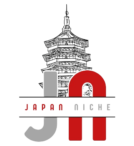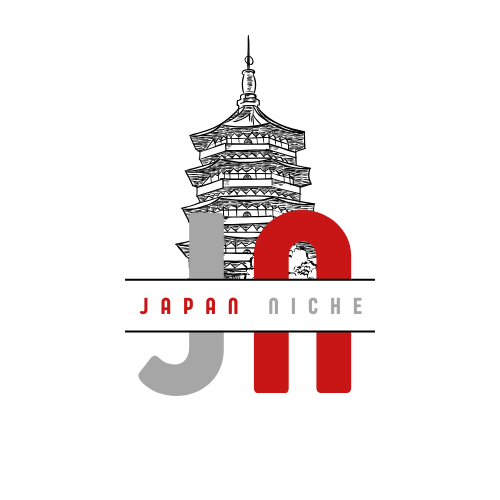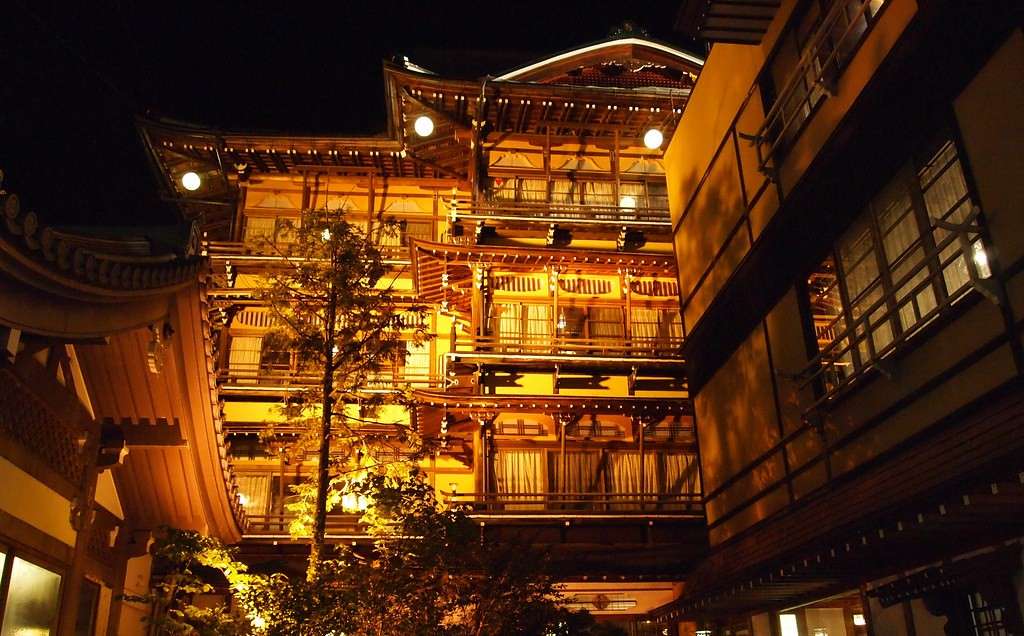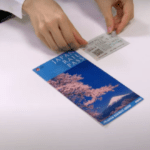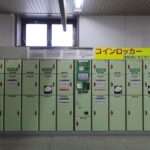Suppose You’re soaking in a steaming onsen bath, gazing at snow-capped Mount Fuji while wrapped in the comfort of your yukata robe. This isn’t just a dream – it’s the ryokan experience! I can tell you that getting it right is absolutely worth the effort.
Here’s something that might surprise you: some of Japan’s most prestigious ryokans are booked up to 6 months in advance, especially during cherry blossom season. I learned this the hard way when I tried to book a famous Hakone ryokan just two months before my spring trip. Big mistake! But don’t worry – I’m here to make sure you don’t repeat my rookie errors.
In this guide, I’ll walk you through everything you need to know about booking your perfect ryokan stay. From choosing the right type of ryokan to navigating Japanese booking websites, I’ve got you covered. Trust me, there’s nothing quite like the feeling of sliding open those shoji screens to your own piece of Japanese tradition.
Ryokan Types and Pricing
Let me tell you something that took me years to figure out – not all ryokans are created equal! When I first started exploring Japanese accommodations, I was completely overwhelmed by the options. Now, I can help you navigate them like a pro.
First things first: ryokans generally fall into three main categories. At the luxury end, you’ve got places like the famous Gora Kadan in Hakone, where prices can easily exceed ¥100,000 ($700) per night. These high-end establishments often feature private onsen baths, elaborate kaiseki meals, and impeccable service. I once splurged on one of these for my anniversary, and let me tell you – the experience was unforgettable!
Mid-range ryokans are where you’ll find the sweet spot of value and authenticity. These typically run between ¥30,000-60,000 ($200-400) per night for two people, including two meals. This is where I usually recommend first-time ryokan guests start their journey. You’ll get all the traditional elements – tatami floors, futon bedding, Japanese-style baths – without breaking the bank.
For budget travelers, there are more affordable options starting around ¥15,000 ($100) per night. These might be simpler family-run establishments, sometimes called minshuku, but they can offer an equally authentic experience. I’ve had some of my most memorable conversations with local owners at these smaller places!
Here’s a pro tip I wish someone had told me earlier: most ryokan rates are per person, not per room. And those rates usually include two meals – dinner and breakfast. When you’re comparing prices with hotels, keep this in mind! A ¥20,000 per person ryokan stay might actually be better value than a ¥25,000 hotel room when you factor in the elaborate meals.
Speaking of rooms, you’ll typically choose between Japanese-style and Western-style options. Japanese-style rooms feature tatami mat flooring and futon bedding that’s laid out each evening. If you’re worried about sleeping on the floor, don’t be! The futons are surprisingly comfortable, and many ryokans now offer thicker versions for Western guests. I always opt for Japanese-style rooms – they’re just part of the authentic experience!
Watch out for seasonal pricing variations too. During peak seasons like cherry blossom (late March to early April) and autumn leaves (November), prices can jump by 20-30%. The same goes for Japanese holiday periods like Golden Week (early May) and Obon (mid-August). I’ve learned to book well in advance for these periods or adjust my travel dates to avoid peak pricing.
Here’s a table summarizing the informations
| Category | Price Range (per night) | Description | Tips/Notes |
|---|---|---|---|
| Luxury Ryokans | ¥100,000+ ($700+) | High-end establishments like Gora Kadan, featuring private onsens, kaiseki meals, and exceptional service. | Unforgettable experience; great for special occasions. |
| Mid-Range Ryokans | ¥30,000-60,000 ($200-400) | A balance of value and authenticity, including meals and traditional elements like tatami floors and futon bedding. | Ideal for first-time ryokan guests. |
| Budget Ryokans | Starting around ¥15,000 ($100) | Affordable family-run places (minshuku) that offer authentic experiences. | Great for memorable local interactions. |
| Additional Considerations | Notes |
|---|---|
| Pricing Structure | Most ryokan rates are per person and include two meals (dinner and breakfast). |
| Room Options | Japanese-style rooms with tatami and futon bedding, Western-style options available. |
| Seasonal Pricing | Prices can increase by 20-30% during peak seasons (cherry blossoms, autumn leaves, holidays). |
Best Booking Platforms and Websites
Over the years, I’ve tried pretty much every possible way to book a ryokan, and I’ve got to say – some methods are definitely better than others! Let me share what I’ve learned about navigating the sometimes-confusing world of ryokan reservations.
The most straightforward option for international travelers is using booking platforms like Booking.com or Agoda. These sites usually have English interfaces and accept international credit cards without hassle. Plus, you can read reviews from other travelers, which I find invaluable. However, here’s something many people don’t realize: these platforms don’t list all ryokans, especially the more traditional ones!
For the widest selection, Japanese booking sites like Rakuten Travel and Jalan are your best bet. Yes, they can be a bit trickier to navigate, but here’s my secret weapon: the Google Chrome browser with its built-in translator. It’s not perfect, but it gets the job done! I’ve booked some amazing off-the-beaten-path ryokans this way that I never would have found otherwise.
Direct booking is another option, especially for high-end ryokans. Many luxury properties have English-speaking staff and their own booking systems. I’ve found that direct booking sometimes comes with perks like better room selection or special meal options. Plus, it’s easier to communicate special requests when you’re dealing directly with the ryokan.
One platform that deserves special mention is the Japanese Guest Houses website. While they act as a middleman, their service is invaluable for first-time ryokan guests. They handle all communication with the ryokan in Japanese, and their customer service is fantastic. Yes, there’s usually a small service fee, but from my experience, it’s worth it for the peace of mind.
Here’s a pro tip that’s saved me more than once: always check multiple platforms for the same ryokan. I’ve sometimes found price differences of up to 20% for the same room! Just be sure to compare apples to apples – some sites include meals while others don’t.
Here’s a table summarizing the information about booking ryokans:
| Booking Method | Description | Pros | Cons | Tips |
|---|---|---|---|---|
| International Platforms | Booking platforms like Booking.com and Agoda. | – English interface – Accepts international credit cards – Access to traveler reviews | – Don’t list all ryokans, especially traditional ones. | Great for convenience and reviews. |
| Japanese Booking Sites | Japanese platforms like Rakuten Travel and Jalan. | – Wider selection of ryokans. | – More challenging to navigate, especially for non-Japanese speakers. | Use Google Chrome’s built-in translator for easier navigation. |
When to Book Your Ryokan
Timing is everything when it comes to ryokan bookings! I learned this lesson the hard way during my first attempt to visit during cherry blossom season. I waited until January to book for April, and guess what? Almost everything was full! Let me save you from making the same mistake.
For popular ryokans during peak seasons, you’ll want to book 3-6 months in advance. This is especially true for destinations like Kyoto during spring and fall, or any onsen town during winter. I’ve noticed that the most sought-after properties, like the famous Nishimuraya Honkan in Kinosaki Onsen, often open their reservations exactly 6 months ahead.
Here’s my seasonal booking timeline based on years of experience:
| Season | Booking Timeline |
|---|---|
| Cherry Blossom Season | Book 6 months ahead (late March – early April) |
| Autumn Foliage | Book 4-5 months ahead (October – November) |
| Winter Onsen Season | Book 3-4 months ahead (December – February) |
| Summer | Book 2-3 months ahead (June – August), except for Obon festival |
| Shoulder Seasons | Book 1-2 months ahead (May, June, September) |
One insider tip I’ve discovered: if you’re flexible with your dates, try booking midweek stays. Weekend slots fill up much faster, and some ryokans even charge premium rates for Friday and Saturday nights. I’ve sometimes found availability at popular ryokans just a month in advance – but only for Wednesday or Thursday nights!
Essential Information for Booking
Let me walk you through exactly what you need to have ready when making your ryokan reservation. I remember feeling overwhelmed during my first booking attempt, but now I’ve got it down to a science!
First, you’ll need the basics:
- Full names of all guests (in Western order for most booking sites)
- Check-in and check-out dates
- Number of guests and their ages (children’s ages are especially important)
- Your contact information including email and phone number
- Credit card details for deposit or guarantee
But here’s something many first-timers don’t realize – you’ll also need to specify:
- Your estimated arrival time (this is crucial as many ryokans close their front desk early)
- Dinner time preference (if meals are included)
- Any dietary restrictions or allergies
I once made the mistake of not mentioning my shellfish allergy until arrival. While the staff accommodated me amazingly well, I could tell it threw their kitchen for a loop. Now I always communicate dietary needs during booking – it makes everyone’s life easier!
Understanding Ryokan Policies
Let me share what I’ve learned so you can avoid any awkward moments. Ryokan policies might seem strict at first, but there’s usually a good reason behind each one.
The most important policy to understand is the cancellation rule. Most ryokans have stricter cancellation policies than hotels – we’re talking about 100% charges if you cancel within 7 days of arrival. I always mark my calendar with the “point of no return” date after booking. Some luxury ryokans even charge a deposit at booking, which might not be refundable.
Meal policies are another biggie. If your stay includes meals (and most do), you need to understand that:
- Dinner and breakfast times are often fixed
- You can’t usually skip meals for a discount
- Last-minute dietary changes might not be possible
- Some ryokans require meal reservations even if they’re included
Then there’s the onsen etiquette. Most ryokans have shared bathing facilities, and yes – that usually means no swimsuits allowed! If you’re not comfortable with public bathing, look for properties offering private onsen baths. Some ryokans also have strict policies about tattoos in their onsen. I’ve found that many are becoming more accepting, but it’s always better to ask ahead if this affects you.
Special Considerations and Requests
This is where my experience really comes in handy – I’ve dealt with just about every special request you can imagine! The key is clear communication and advance notice.
Let’s talk about dietary restrictions first. Whether you’re vegetarian, vegan, halal, or have allergies, many ryokans can accommodate you – but they need to know in advance. Most kaiseki meals can be modified, but don’t expect the impossible. I once helped a strict vegan book a ryokan, and while they got an amazing plant-based meal, it took about two weeks of back-and-forth communication to arrange.
Traveling with kids? Here’s what you need to know:
- Some ryokans have minimum age requirements
- Family rooms often need to be booked well in advance
- Kid-friendly meal options usually need to be requested
- Some facilities might have restricted hours for children
Accessibility is another important consideration. Traditional ryokans often have steps, narrow doorways, and other architectural features that might be challenging. However, many modern ryokans have accessible rooms and facilities – you just need to know where to look and what to ask for.
Pre-Arrival Communication
The final stretch before your ryokan stay is crucial! I’ve learned that good pre-arrival communication can make the difference between a good stay and an amazing one.
About a week before your stay, I recommend confirming:
- Your exact arrival time
- Transportation arrangements (many ryokans offer free shuttle service)
- Any special requests you’ve made
- Dinner time reservation
- Directions if you’re self-driving
Here’s a pro tip: even if you’ve booked through an English-language site, have your confirmation details written in Japanese. I use Google Translate to save the ryokan’s name and address in Japanese characters on my phone. This has saved me countless times when asking for directions or showing taxi drivers!
If you’re running late (it happens!), it’s absolutely crucial to let the ryokan know. I once got stuck in unexpected traffic and called 30 minutes before my expected arrival time. The staff was so appreciative of the heads-up, they kept the kitchen open a bit longer for my dinner!
Remember, your ryokan experience starts well before you arrive. Clear communication helps the staff prepare for your stay and ensures you’ll get the most out of your Japanese inn adventure. Don’t be shy about asking questions – in my experience, ryokan staff would rather answer a dozen questions before arrival than have an unhappy guest during the stay!
This comprehensive guide should help you navigate the process of booking and preparing for your ryokan stay with confidence. Remember, every experienced ryokan visitor was once a first-timer. Take it step by step, and you’ll be sliding open those shoji screens to your own piece of Japanese tradition before you know it!
After making plenty of mistakes myself!, I can tell you that booking a ryokan doesn’t have to be intimidating. Yes, there are lots of details to consider, but that’s what makes the experience so special. Remember to book well in advance for popular destinations, communicate any special needs clearly, and don’t be afraid to ask questions – ryokan staff are typically incredibly accommodating once you reach out.
Think of booking a ryokan as the first step in your Japanese cultural journey. Each decision you make – from the type of room to the dinner time you select – helps create your unique ryokan experience. And trust me, when you’re finally settling into that hot spring bath or savoring your first bite of kaiseki dinner, you’ll be glad you took the time to get all those details right.
Ready to start planning your ryokan stay? Take it one step at a time, use the resources I’ve shared, and remember – every experienced ryokan traveler was once a beginner too. Your perfect Japanese inn experience awaits!
